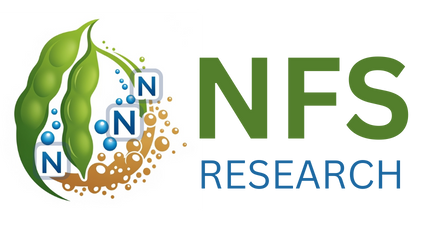The Wainright Haelan 951 Protocol: Continuing a Legacy in Fermented Soy–Based Wellness

The Wainright Protocol: A Legacy in Fermented Soy Research
Walter H. Wainright, founder of U.S. Research, was an early and persistent advocate for the study of nitrogen-fermented soy in the context of nutritional oncology. Over decades, he examined the biological mechanisms and clinical literature surrounding this unique fermentation process, helping shape what became known as the “Wainright Protocol” — a nutrition-centered approach aimed at supporting individuals facing serious health challenges, including protein-calorie malnutrition.
Scientific Foundations
The protocol emerged from both laboratory research and clinical observation, focusing on nitrogen-fermented soy as a concentrated source of bioavailable isoflavones and other phytonutrients. Research exploring its potential has examined:
- Isoflavone activity – Genistein and daidzein have been studied for their influence on cell cycle regulation, apoptosis, and modulation of the Notch-1 and NF-κB pathways.
- Synergy with other compounds – Laboratory models suggest possible complementary effects when combined with other agents targeting apoptotic pathways.
- Hormonal and genetic modulation – Certain studies indicate increased expression of tumor suppressor genes (e.g., TP53, p21) and enhanced differentiation of circulating tumor cells.
- Inflammatory cytokine regulation – Nitrogen-fermented soy has been observed to downregulate pro-inflammatory cytokines such as TNF-α and IL-6, potentially impacting immune balance and cachexia.
- Nutritional and hematologic support – Some clinical observations report stabilized blood counts during treatment and improved markers of nutritional status.
Potential Areas of Application
While much of the research interest has been in oncology, investigators and clinicians have explored possible broader uses, including:
- Adjunctive support during conventional cancer therapies
- Chronic inflammatory and autoimmune conditions
- Immune system recovery after illness
- Support for gut health and potential influence on neuroinflammation
Case Study Summaries
Published reports and anecdotal accounts describe individuals who incorporated nitrogen-fermented soy as part of broader wellness or integrative care plans. These accounts range from oncology patients seeking supportive care to individuals with autoimmune or inflammatory conditions. While outcomes vary, recurring themes in these narratives include improved energy, appetite, weight stability, and quality of life.
Continuing the Legacy
The Wainright Protocol represents more than a set of nutritional guidelines — it reflects a philosophy of combining evidence-based nutrition with respect for the body’s natural healing processes. Further controlled studies are needed to confirm and clarify its potential roles in clinical practice.
Case Study Summaries on Nitrogen-Fermented Soy Use
Case 1 – Advanced Breast Cancer
A woman in Georgia with Stage IV breast cancer incorporated nitrogen-fermented soy into her daily routine, taking approximately 8 ounces per day over ten months. Imaging during this time showed changes in her disease status, and she reported improved energy levels. She did not undergo conventional chemotherapy during this period.
Case 2 – Colon Cancer Without Chemotherapy
A man in Texas diagnosed with Stage III colon cancer was unable to proceed with chemotherapy due to medical complications. He followed a nutrition plan that included nitrogen-fermented soy twice daily for nearly one year. Regular imaging over this period did not indicate recurrence, and he reported feeling well.
Case 3 – Platinum-Resistant Ovarian Cancer
A 56-year-old woman with advanced, treatment-resistant ovarian cancer began self-administering 4 ounces per day of nitrogen-fermented soy after exhausting conventional treatment options. She reported a decrease in symptoms, and her tumor marker (CA-125) levels dropped. Her case was later documented in a peer-reviewed gynecologic oncology journal.
Case 4 – Prostate Cancer Risk Management
A man with elevated PSA levels and vascular changes associated with prostate cancer began taking one bottle of nitrogen-fermented soy daily. Within six months, his PSA levels returned to a normal range, and vascular imaging improved. His healthcare team was unaware of his use of fermented soy during this period.
Case 5 – Crohn’s Disease History
A woman with decades-long Crohn’s disease began using nitrogen-fermented soy and gradually discontinued her immunosuppressive medications. Approximately eight to ten months later, colonoscopy findings showed no evidence of previous inflammatory markers. She has remained symptom-free for over ten years.
Case 6 – Dual Gynecologic Cancers
A woman diagnosed with Stage II ovarian and Stage I uterine cancer consumed nitrogen-fermented soy twice daily following surgery. Within eight weeks, her CA-125 levels decreased substantially. She continued use for nearly a year and has remained without recurrence according to her follow-up care.
Case 7 – Cholangiocarcinoma
A man diagnosed with cholangiocarcinoma used nitrogen-fermented soy daily for four months. Subsequent follow-ups showed no active disease, and he remained without recurrence for more than six years.
Case 8 – Stage IV Lung Cancer with Brain Metastases
A man with metastatic lung cancer to the brain integrated nitrogen-fermented soy into his routine alongside dietary changes. Over time, imaging showed stabilization and reduction in tumor size. He reported improvements in strength and immune function.
Case 9 – Veterinary Application: Prostate Cancer in Canine
A Shetland sheepdog diagnosed with prostate cancer received nitrogen-fermented soy twice daily. Observations included increased energy, improved coat quality, and greater activity levels. The intervention appeared to improve quality of life, although the disease remained present.
Case 10 – Stage IV Melanoma
A woman with metastatic melanoma used nitrogen-fermented soy in combination with an anti-inflammatory diet. Over several months, imaging revealed tumor shrinkage, and she reported notable gains in energy and mental clarity.
